Sumy-well done. From the history of 1 hussars
And 03. 05. 1765, he becomes the actual Sumy Hussars - having been reformed by the governor of the Ukrainian-Sloboda province Shcherbinin.
The regiment was waiting for a series of reorganizations and reorganizations. So, 26. 06. 1783, he is called the Sumy Hussar Ukrainian cavalry, and 26. 02. 1784 becomes Sumy easy-horse. By this time, the regiment included squadrons and a horse ranger squad in 6.
1 th hussars. The officers of the regiment led by Colonel I. D. Nilov (center). The latter was a regiment commander in 1906 - 1912, and later in the rank of major general, commanded the 2 th brigade of the 1 th cavalry division.
Finally, the March 29 1801 regiment becomes Sumy hussars. The regiment "gave" life to a number of parts of the Russian cavalry: 21 September 1789, highlighting the horse ranger team to form the Elisavetgrad horse ranger regiment, 16 May 1783, singling out the 2 squadron to form the Odessa Hussar Regiment, 13, on June 19, 19, 19, 19-12 the formation of the Grodno Hussar Regiment, October 1806 12, highlighting people to form the Novgorod Kirasirsky Regiment, and September 1811 16, highlighting a squadron to form the 1896 Dragoon Regiment of Nezhin.
The structure of the regiment changed (the number of squadrons was reduced and increased, teams and personnel appeared), in the period of 1882 - 1907. the regiment managed to visit the dragoons until finally 26 of August of 1912. It became the 1 of the Hussar Sumy general Seslavin regiment.
The Sumy Hussars had 3 chiefs: Adjutant General Count von der Palen (from 19 April 1853 to 25 April 1864) - the regiment during this period was called Sumsky Hussar Lieutenant General von der Palen and Sumy Hussar Adjutant General Count von der Palen ), King Frederick VIII of Denmark (from 22 in May 1865, when Frederick was still the crown prince, in May on 11 in 1912) and Major General Seslavin (eternal Chef of the Regiment from 26 in August 1912).
Volunteer 1 hussar regiment. Dressed in a chic leather jacket - these were worn by motorists and pilots. On the chest is a regimental badge.
The honored regiment had a whole series of insignia:
1) St. George's standard with the inscriptions "1651 - 1851" and "In reward excellent feats rendered to the successfully completed 1814 campaign of the year" with the Alexander jubilee ribbon. 27 was granted on June 1851 of the year instead of the St. George standard with a similar inscription granted to 30 in August 1814. Highest letters from 23. 05. 1826 and 27. 06. 1851
2) 18 St. George pipes with the inscription "Sumy regiment, for the difference with the defeat and expulsion of the enemy from the limits of Russia in 1812 year." 13 of April of 1813 was granted. Highest reading and writing from 04. 06. 1826
3) Signs on the caps with the words "For the difference." 30 of May 1814 was granted for feats in the fighting with the French in 1812 - 1814, especially in the battle of Leipzig.
4) Buttonhole "For the difference" on the uniforms of the officers. Awarded in 1882. Replaced hussar units Guards, established 11. 04. 1879 g. Highest reading and writing from 24. 04. 1879
And this officer of the 1 hussar regiment “traded” the horse for the Indian motorcycle. Carpathian Front, 1916
The regiment is a participant in the assault on the fortress Novosergievskaya (11 on April 1711), the Russian-Turkish wars 1768 - 1774. and 1787 - 1791, the Italian and Swiss campaigns of 1799, the Napoleonic wars (starting with the battle of Golimine 14, December of 1806), the Polish campaign of 1831.
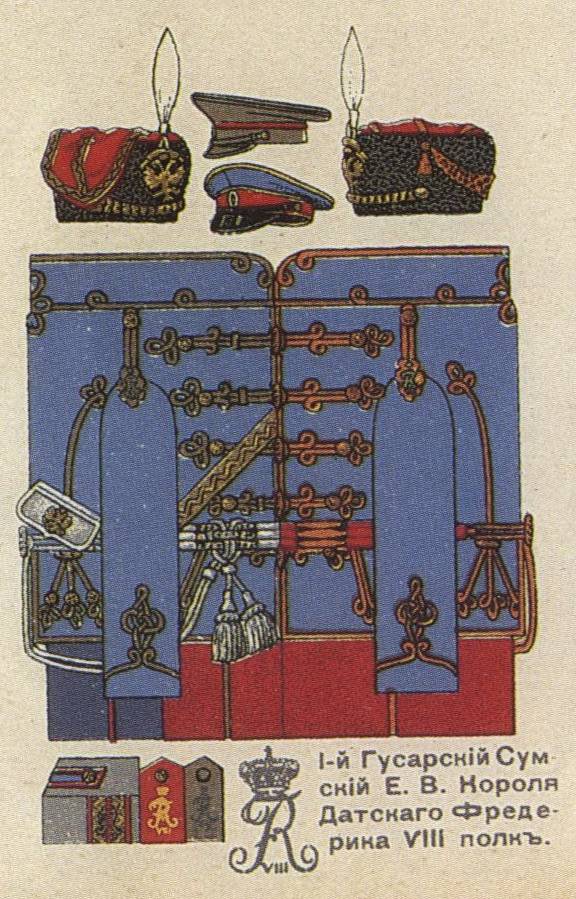
Forms of ranks of the regiment. Schenk. 1910. Black horses are the blacks: 1 squadron - large crows without marks, 2 squadron - black with legs in stockings and with patches and stars in the forehead, 5 squadron - carak, 6 th squadron - large blacks; the trumpeters are gray.
The regiment left for the Great War as part of the 2 Brigade of the 1 Cavalry Division, Lieutenant General V.I. Gurko, joining the 1 Army of the North-Western Front. The commander of the regiment was Colonel P. P. Groten.
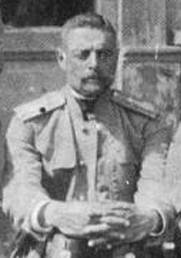
P.P. Groten
In October, the regiment receives a new commander in October 1915 — they became Colonel V. A. Leontyev, who was replaced in September by 1916 by Colonel V. N. Zhukov.
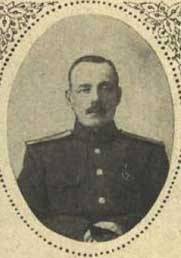
V.N. Zhukov
Finally, in June, the 1917 regiment received its last commander, Colonel N. N. Neelova.
In the period October 1916 - February 1917 the division was part of the 1-th Horse Corps (V. Karpeev. The Cavalry: divisions, brigades, corps. Russian army formations. 1810 - 1917. M., 2012. C. 99.).
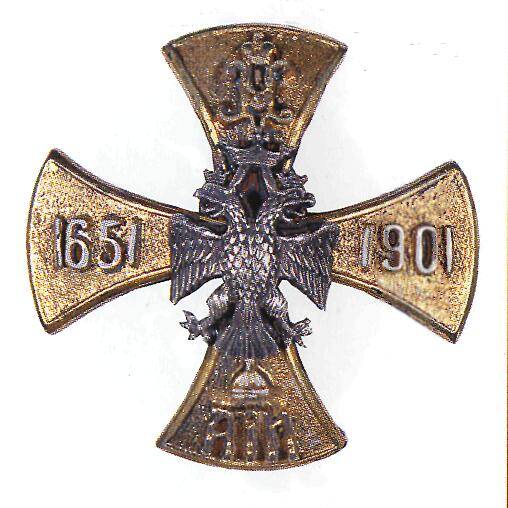
Regimental badge. 13 approved. 12. 1908
The 1 Cavalry Division distinguished itself during the East Prussian operation - during the battle of Markgrabov on July 31 and during the attempt to establish contact with the right wing of 2 Army 10 - 18 August 1914.
During the battle near Markgrabov, the unit conducted competent reconnaissance by force, capturing the city and obtaining important intelligence information. Cavalrymen had to fight on horseback and on foot. In Markgrabovo, the commander of the 4 squadron of Sumy captain, Captain Lazarev, was killed, and Khoruzhinsky was mortally wounded. Officers were buried in Suwalki.
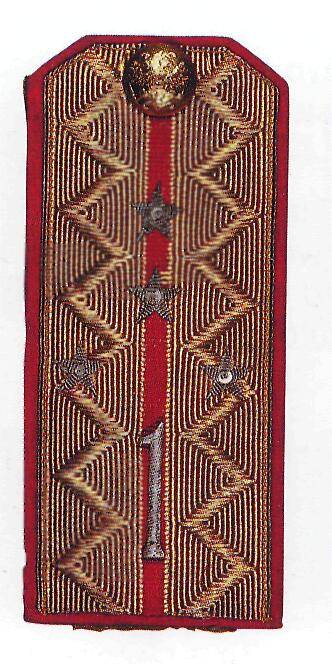
Shoulder strap, staff captain of the 1 hussar regiment. 1912 - 1917
Hussars distinguished themselves during the raid to establish contact with the 2 th army. It was the Sumy Hussars who captured the Korschen station, and during the retreat, while being in the rear guard, they withstood the enemy’s artillery and rifle fire - but covered the main forces of the division. Moreover, having waited for the approach of the German infantry, they departed as if on a parade - beautifully leaving the German rear [Littuer V. Russian Hussars. Memoirs of an officer of the imperial cavalry. M., 2006. C. 159-160].
In the course of the First Battle of the Masurian Lakes, the 1 Cavalry covered an inter-grain catwalk - solving the most important operational task. Discontinued hussars and dragoons joined the ranks of the infantry - with fire repelling the Germans offensive [Littuer V. Decree. cit. C. 164-165]. Captain Prince Menshikov ordered the hussars not to open fire without an order - and, having let the enemy in at 500-600 steps, the Sumy opened a deadly fire [Sumy Hussars. 1651 - 1951. Buenos Aires, 1954. C. 191].
The regimental doctor of the 1 hussar regiment Roop with his family. World War I.
At the dawn of the First August Operation, intelligence under the command of Cornet Ivanov was of paramount operational importance. Cornet discovered a large column of German troops moving towards the front. He hid his hussars with horses in the forest more often, and then crawled to the road - and watched and listened to what the Germans were talking about. The officer conducted reconnaissance for several hours, sending subordinates with reports. Moreover, 2 hussars, moving with information to the divisional headquarters, found the 2 th column. These were the first data on the beginning offensive of the enemy [Littuer V. Decree. cit. C. 169].
In late January - early February, the 1915 regiment left East Prussia - during the unsuccessful Second August operation. During this period, he lost 3 officers killed and dead from injuries and 7 officers wounded - 25% of the total. Sumy fought on horseback and on foot. They learned and that such a trench.
In early March, the hussars returned to the Avgustovskiy forest area - moving in the vanguard of the advancing Russian troops.
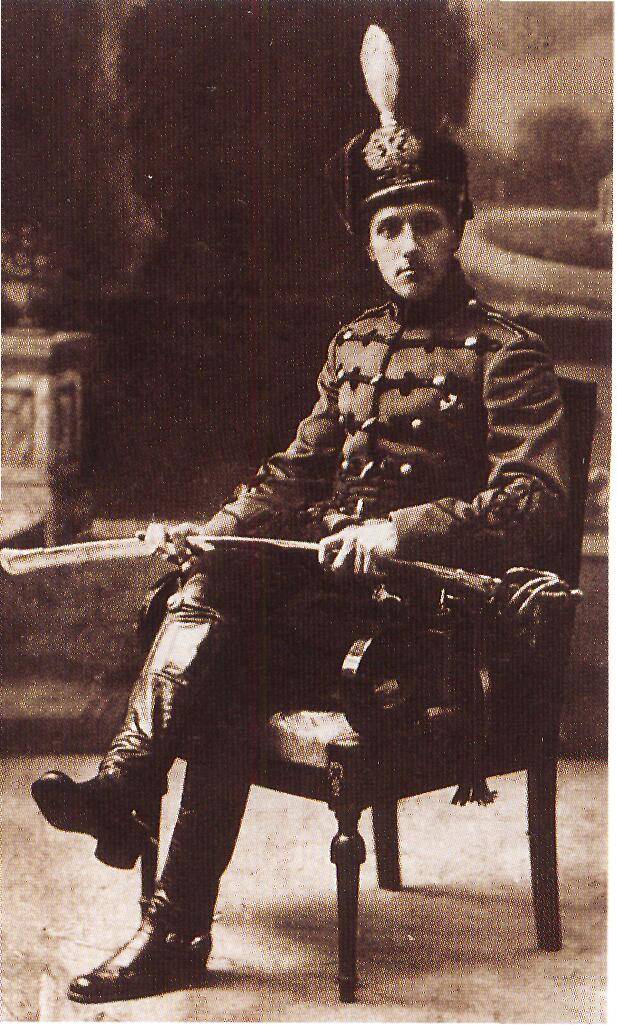
Volunteer 1 hussars of the regiment - as can be seen from the tricolor cord on the shoulders and the saber, usually relied on the officers.
In April, only a third of the regiment remained - so, in the squadron of V. Littweer, there were 30 people instead of 150 laid by the state (Littuer V. Decree. Works. C. 183.). In others, also for 30-40 checkers. (Sumy Hussars. C. 219.). The regiment acted actively and selflessly - which affected personal and equine compositions.
The ending should ...
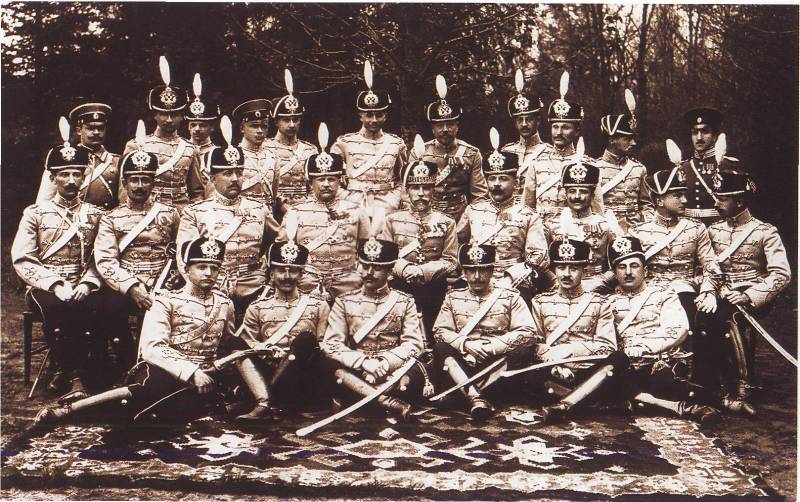
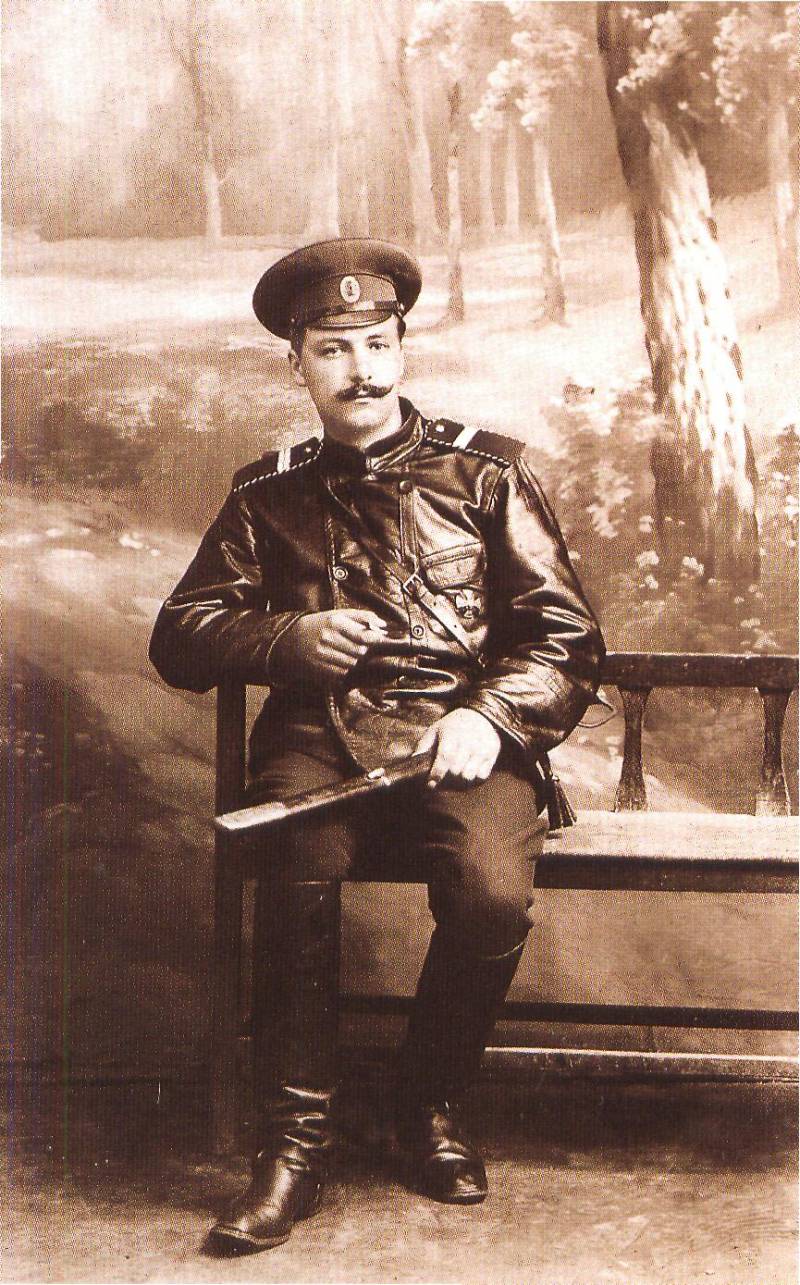
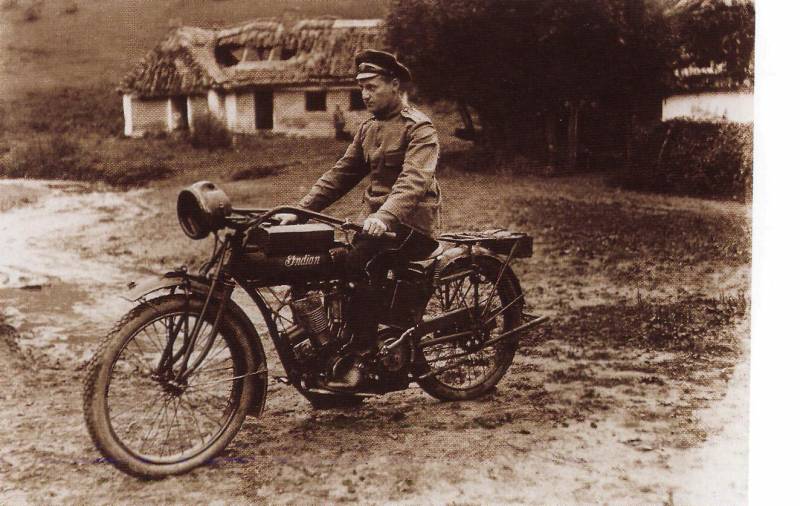
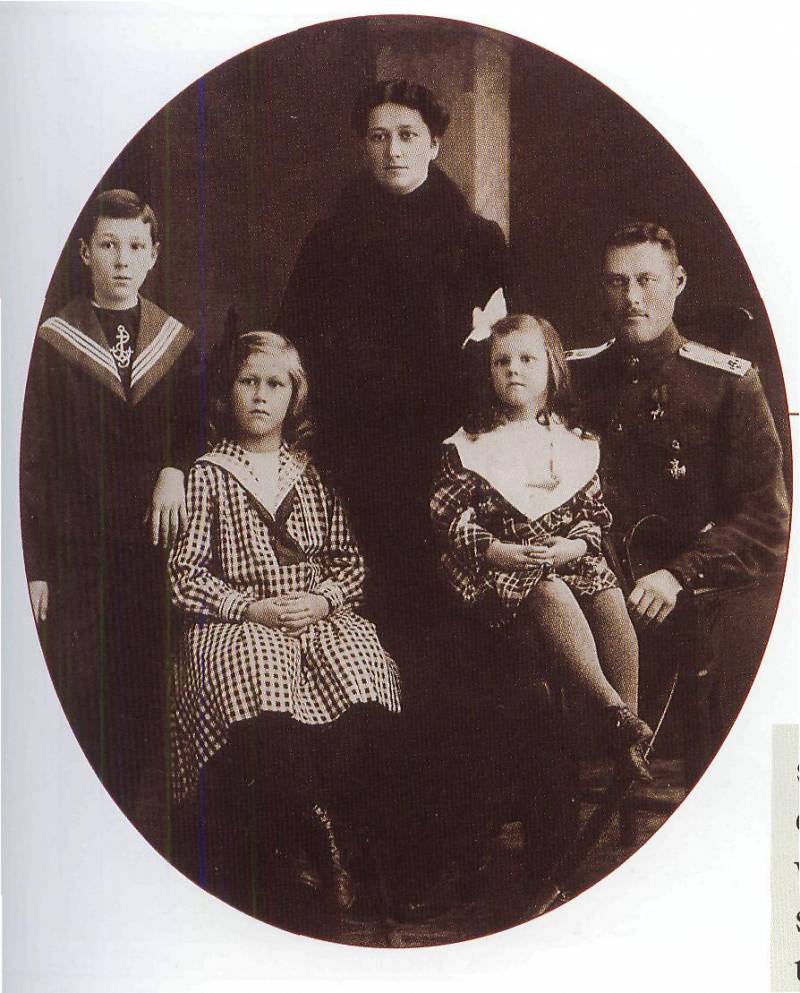
Information